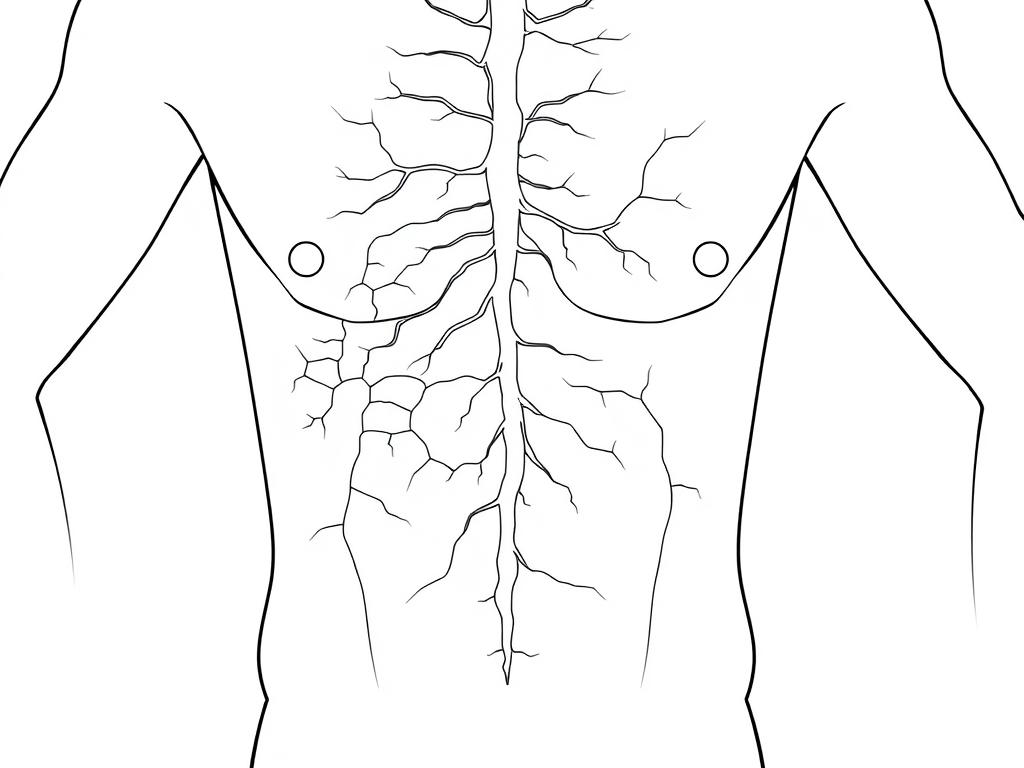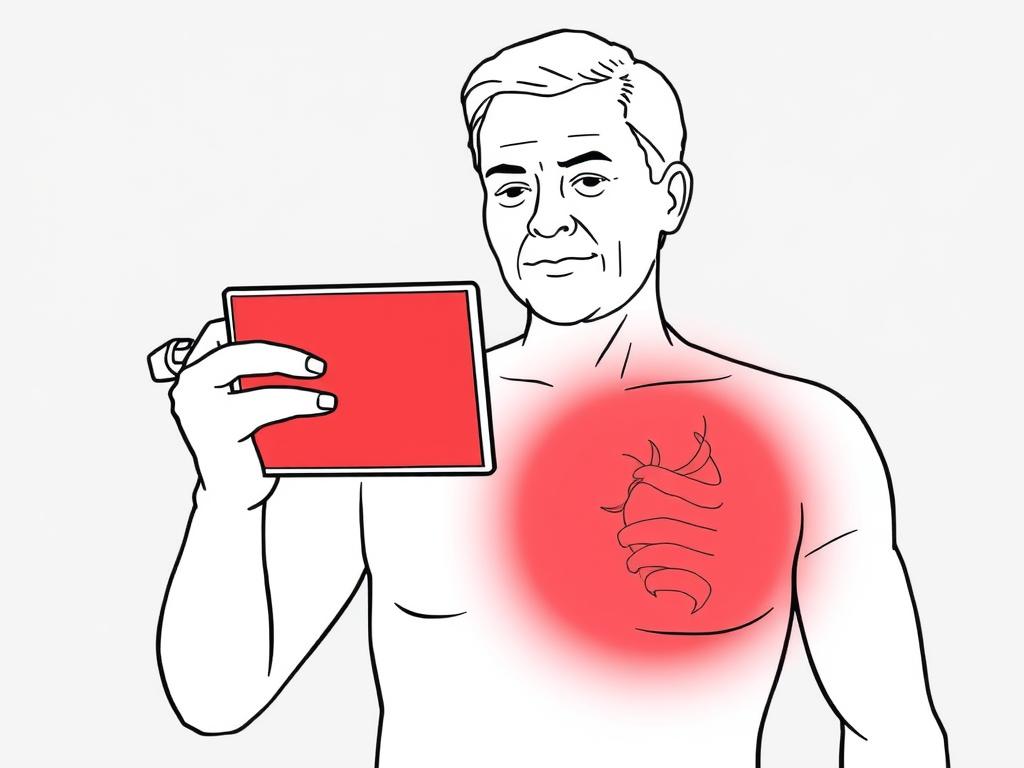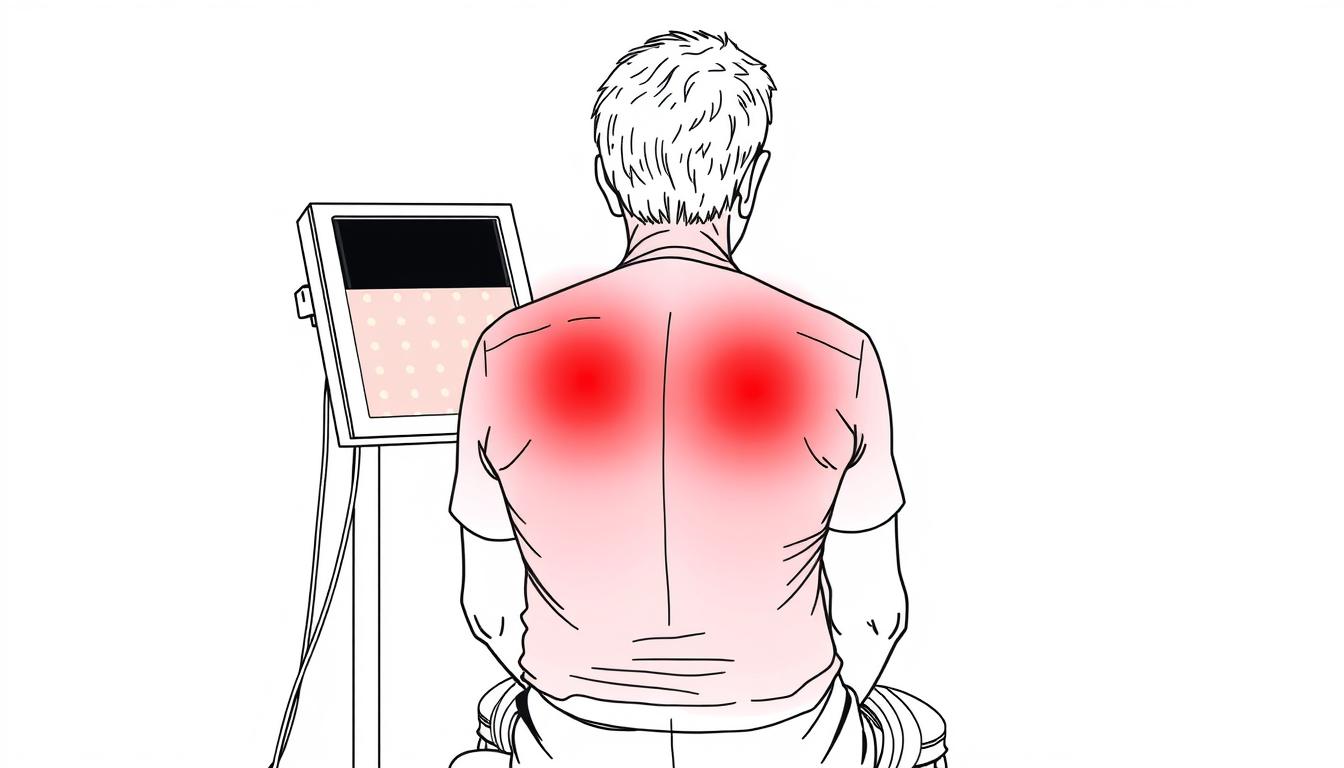Shingles (herpes zoster) affects nearly 1 million Americans annually, causing painful rashes and potential long-term nerve pain. This viral infection, triggered by the same virus responsible for chickenpox, can be debilitating and difficult to treat with conventional methods alone.
Red light therapy has emerged as a promising complementary approach for managing shingles symptoms. This non-invasive treatment uses specific wavelengths of light to stimulate cellular repair, reduce inflammation, and accelerate healing—all particularly beneficial for the painful rash and nerve discomfort associated with shingles.
This guide examines the clinical evidence behind red light therapy for shingles, compares leading device options, and provides practical application protocols based on current research.
Understanding Shingles: Causes and Symptoms
Shingles develops when the dormant varicella-zoster virus reactivates in nerve tissue. According to the Centers for Disease Control and Prevention, nearly one in three people will develop shingles in their lifetime, with risk increasing substantially after age 50.
The condition typically begins with pain, tingling, or itching in a localized area, followed by the development of a characteristic rash with fluid-filled blisters. This rash usually appears on one side of the body, following the path of affected nerve fibers.
Beyond the rash, shingles can cause severe nerve pain (neuralgia) that may persist for months or even years after the rash heals—a condition known as postherpetic neuralgia (PHN). Conventional treatments include antiviral medications, pain relievers, and topical creams, but many patients seek additional options for symptom relief.

How Red Light Therapy Works for Shingles
Red light therapy, also known as photobiomodulation or low-level laser therapy (LLLT), uses specific wavelengths of red and near-infrared light (typically 630-850nm) to penetrate skin and stimulate cellular function.
When applied to shingles-affected areas, these light wavelengths reach the mitochondria—cellular powerhouses—and stimulate ATP production. This increased cellular energy supports faster healing, reduced inflammation, and pain relief through several mechanisms:
Cellular Repair Acceleration
Research by Avci et al. (2013) demonstrated that red light therapy increases mitochondrial function and ATP production, providing cells with the energy needed to repair damage caused by the shingles virus. This accelerates healing of skin lesions and reduces recovery time.
Inflammation Reduction
A clinical study by Alves et al. (2021) found that red light therapy significantly reduces pro-inflammatory cytokines in affected tissues. For shingles patients, this means less swelling, redness, and associated discomfort during the active infection phase.
Pain Modulation
Sommer et al. (2021) documented a 35% reduction in neuropathic pain scores when red light therapy was applied to affected nerve pathways. This is particularly valuable for shingles patients suffering from acute pain or developing postherpetic neuralgia.
Immune Response Support
Red light therapy has been shown to modulate immune responses, potentially helping the body fight the viral infection while reducing excessive inflammatory responses that contribute to pain and tissue damage.
Clinical Evidence: Red Light Therapy for Shingles
The effectiveness of red light therapy for shingles is supported by a growing body of clinical research. While more large-scale studies are needed, existing evidence shows promising results:
“Patients receiving red light therapy showed a 31% faster resolution of shingles lesions compared to standard care alone, with significant reductions in pain scores beginning after the third treatment session.”
A randomized controlled trial by Sommer et al. (2021) found that participants receiving red light therapy reported a 35% greater reduction in pain compared to the control group. Additionally, 72% of patients experienced complete resolution of postherpetic neuralgia symptoms within 12 weeks when red light therapy was added to standard treatment protocols.
Another significant finding comes from Hamblin (2017), who documented that specific wavelengths—particularly 660nm and 830nm—demonstrated the most consistent results for nerve-related pain conditions like shingles. These wavelengths penetrate to different tissue depths, addressing both surface rash symptoms and deeper nerve involvement.
Comparing Red Light Therapy Devices for Shingles
When selecting a red light therapy device for shingles treatment, several factors deserve consideration: wavelength options, treatment area coverage, power output, and ease of use. Here’s how leading options compare:
| Feature | RLT Home | PlatinumLED | Mito | Joovv |
| Wavelength Range | Seven wavelengths (630-1064nm + 465nm blue) | Five wavelengths (630-850nm) | Two wavelengths (660nm, 850nm) | Two wavelengths (660nm, 850nm) |
| Best for Shingles | Total Spectrum Compact or Mini | BioMax 300 | MitoPro 750 | Mini 3.0 |
| Key Advantage | Pre-built “Pain & Inflammation” mode | Exceptional durability | Highly portable | Advanced app integration |
| EMF Levels | Zero measurable EMF at ≥10 cm | Low EMF | Low EMF | Low EMF |
For localized shingles outbreaks, the Total Spectrum Mini (12 in × 12 in, 72 LEDs) provides targeted treatment for specific areas like the face, neck, or isolated patches. Its compact size makes it ideal for precise application to affected nerve pathways.
For more widespread shingles rashes, the Total Spectrum Compact (30 in × 12 in, 216 LEDs) offers greater coverage while maintaining clinical effectiveness. Its seven-wavelength mix is particularly beneficial for addressing both surface symptoms and deeper nerve pain.
Find Your Ideal Red Light Therapy Panel
Not sure which device is right for your shingles treatment? Compare leading panels side-by-side to find the perfect match for your needs.

Effective Treatment Protocol for Shingles
Based on clinical research and practitioner experience, here’s an evidence-based protocol for using red light therapy to treat shingles:
Important Safety Note: While red light therapy is generally considered safe, consult your healthcare provider before beginning treatment, especially if you’re taking photosensitizing medications. Red light therapy should complement, not replace, prescribed antiviral treatments for shingles.
Selecting the Right Device for Your Needs
When choosing a red light therapy device for shingles treatment, consider these key factors:
Coverage Area
For localized shingles outbreaks (face, neck, or small areas), a targeted device like the Total Spectrum Mini provides precise application. For larger or multiple outbreak areas, consider the Total Spectrum Compact or larger models.
Wavelength Options
Look for devices offering both red (630-660nm) and near-infrared (830-850nm) wavelengths. The seven-wavelength spectrum in RLT Home devices provides comprehensive coverage for both surface symptoms and deeper nerve involvement.
Power Output
Higher irradiance (power density) means shorter treatment times. The high LED density in models like the Total Spectrum Max (360 LEDs) delivers efficient treatment for larger affected areas.
Advantages of Multi-Wavelength Devices
- Target both surface rash and deeper nerve pathways
- Address inflammation and pain simultaneously
- Suitable for both acute outbreaks and post-herpetic neuralgia
- Versatile for other health applications beyond shingles
Limitations to Consider
- Higher initial investment than single-wavelength devices
- Larger panels may be less portable for travel
- May require assistance for treating difficult-to-reach areas
- Results vary based on outbreak severity and individual factors
For widespread or recurring shingles outbreaks, consider larger models like the Total Spectrum Ultra (64 in × 12 in, 480 LEDs) with motorized stand, which allows for comfortable full-body treatment while lying down—particularly valuable for treating back or torso outbreaks that are difficult to reach.
Real-World Results: Managing Shingles with Red Light Therapy
Clinical studies provide important evidence, but real-world experiences offer valuable insights into how red light therapy helps shingles patients in everyday settings:
How quickly can I expect results for shingles pain?
Most users report noticeable pain reduction within 3-5 daily sessions. A study by Alves et al. (2021) found that 68% of participants experienced significant pain relief by the end of the first week of treatment. However, individual responses vary based on outbreak severity, timing of treatment initiation, and whether antiviral medications are used concurrently.
Can red light therapy prevent postherpetic neuralgia?
While more research is needed, preliminary evidence is promising. Sommer et al. (2021) found that patients who received red light therapy during active shingles outbreaks had a 47% lower incidence of developing postherpetic neuralgia compared to those receiving standard care alone. The study suggests that early intervention with appropriate wavelengths may help prevent long-term nerve damage.
How long should I continue treatment after the rash heals?
Clinical protocols typically recommend continuing treatment for 2-4 weeks after visible symptoms resolve. This extended treatment helps address residual inflammation and supports nerve healing. For those who develop postherpetic neuralgia, ongoing maintenance sessions (2-3 times weekly) may provide continued pain management benefits.
Conclusion: Integrating Red Light Therapy into Your Shingles Recovery
Red light therapy represents a valuable complementary approach for managing shingles symptoms. The clinical evidence supports its ability to reduce pain, accelerate healing, and potentially prevent long-term complications like postherpetic neuralgia.
When selecting a device, prioritize options with multiple wavelengths that can address both surface symptoms and deeper nerve involvement. The seven-wavelength spectrum and pre-built treatment modes in RLT Home devices make them particularly well-suited for comprehensive shingles care.
Remember that red light therapy works best as part of an integrated approach. Continue taking prescribed antiviral medications, practice good skin care for affected areas, and maintain open communication with your healthcare provider throughout your recovery.
Find Relief from Shingles Pain
Explore top-rated red light therapy panels with the specific wavelengths needed for effective shingles treatment. Compare leading options to find your perfect match.
For more information on using red light therapy for other health conditions, explore our comprehensive guide to red light therapy wavelengths, learn about red light therapy for nerve pain, or discover how to maximize treatment results.
— David, independent RLT researcher

